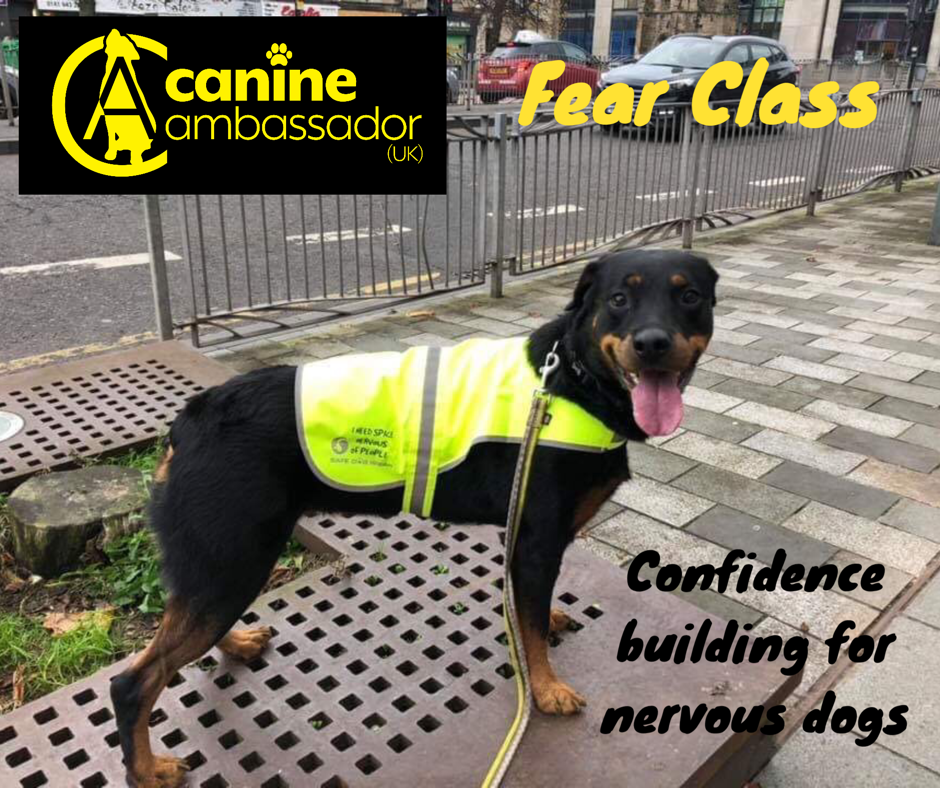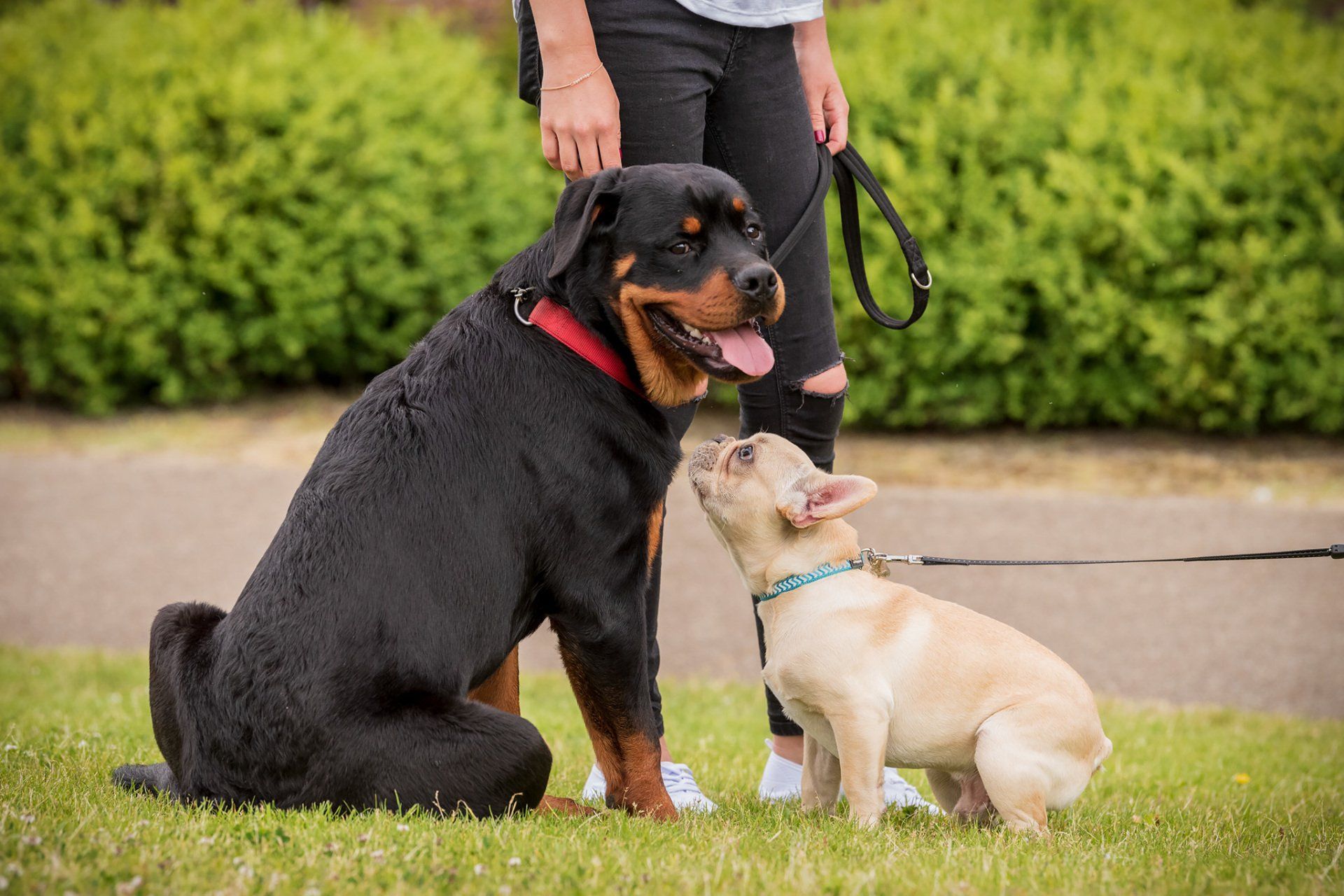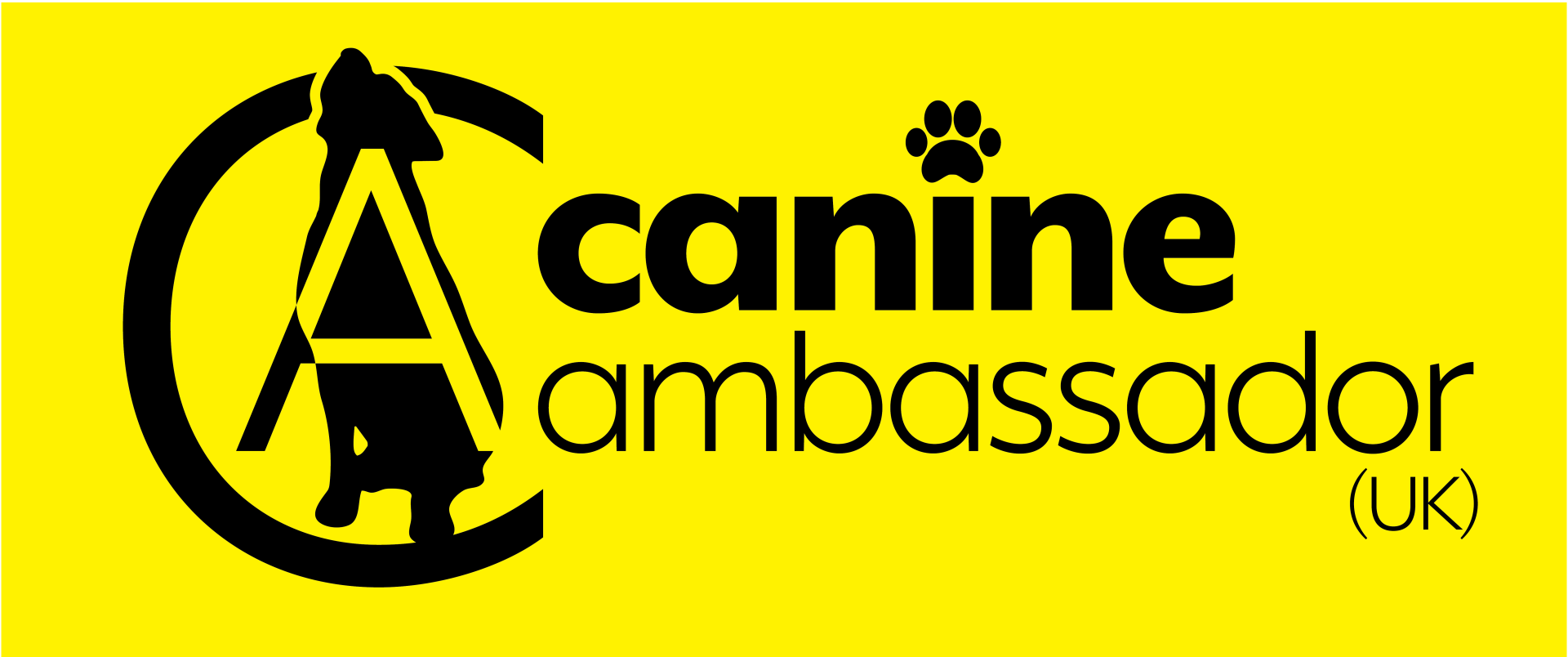Fearful Dogs
- By Canine Ambassador
- •
- 01 Dec, 2018
- •
Confidence building with your fearful dog

At CA, we regularly encounter fearful dogs. There are many reasons a dog may be fearful, it could be genetics, maybe combined with poor socialisation, or a badly timed encounter whilst a puppy that leaves a lasting effect. Often, many fearful dogs are rescues, sometimes from puppy farms, or stray dogs from elsewhere in Europe or even further afield. Many people assume that a fearful dog has been abused in the past, and sometimes this is sadly the case, but it’s more likely that the dog did just not gain enough exposure to the modern world during the critical period of puppyhood.
Many dogs suffer from anxiety at the prospect of going outdoors. Some dogs are carried everywhere as they shut down and refuse to walk.
Some fearful dogs become reactive to people, other dogs and even anything that moves, barking, growling and lunging to drive the threat away. These behaviours, stressful for both the dog and its guardian, often lead to dogs being given up for adoption multiple times in their short life or even euthanised.
Sometimes we see people keeping their fearful dogs indoors, attempting to shield them from the outdoors, or due to embarrassment at the dog’s behaviour. In fact, we see many trainers who advocate keeping these dogs indoors for a variety of reasons.
This is not the answer.
It’s never easy to change a fearful dog but it is possible with hard work and understanding of a dog’s natural fear response. Make sure your expectations are realistic though, a goal maybe for the dog to meet a stranger without cowering for example, rather than hoping to have a dog who enthusiastically jumps over and licks every stranger.
If you're trying to overcome fear with your dog here's some tips.
Encourage play of any sort especially natural play, this means elements of the predatory sequence such as tug, chasing, and wrestling. Use these games to get close to the dog and condition it to bodily contact. Gradually take the play outdoors.
Encourage your dog to make its own noise. Playing with old boxes, buckets or milk cartons allowing the dog to throw them around in order to get to food or a ball or tug. This will help desensitise the dog to loud noises and improve general confidence. Help them to overcome and negotiate small easy obstacles gradually making them more challenging.
Avoid eye contact and baby talk with your dog while it's in a fearful state, instead lead by example showing the dog you are not phased by anything. Your dog will take great confidence knowing your state of mind has not suddenly changed in the presence of something that scares it. People often subconsciously tighten the leash or hold their breath while approaching something they expect to trigger their dog, this feeds the wrong information to the dog, confirming that there is indeed something to be worried about.
Walking /travelling and exploring is among one of the most natural things a dog can do. Walk your dog as much as you possibly can and long enough that the dog is tired. Sometimes walking with a calm well balanced canine companion can help the dog to get moving. Choose quiet natural environments initially, such as a forest, progressing gradually to busier and busier places.
How you carry out the walk is important.
Don't use harnesses or head collars that make the dog feel restricted, use a flat collar that won't pull over the dog’s head. Never force a fearful dog to walk tight by your side on a short leash. This will simply make the dog more fearful as it will feel it has no control over its own safety, use a long leash to allow the dogs natural stride and motion. Don't worry about pulling at this stage as you are trying to reduce anxiety, nothing else. Teach the dog to negotiate left and right of people, this will help your dog realise that stepping around something scary is an option. Allow your dog to maintain a distance that they are comfortable with. Returning a dog to its natural state should always be your mind set.
Avoid over-friendly and overbearing humans, any dog feels more secure being around calm and predictable humans. Ensure any people you interact with do not put any undue pressure on the dog, no leaning over, hands out stretched, prolonged eye contact, eventually you may be able to ask certain people to give a treat or even a scratch under the dog’s chin. This must all be done in the dog’s time and on their terms. In order to increase their confidence, they must always feel that they are in control and the lasting memories of each encounter, positive.
CA
These tips are generalised for the purposes of the blog and obviously do not represent specific advise. They will not apply to every dog in every scenario, if in doubt, contact a reputable trainer/behaviourist with a focus on meeting the natural needs of a canine, and please make sure that they don't use force or aversives.


